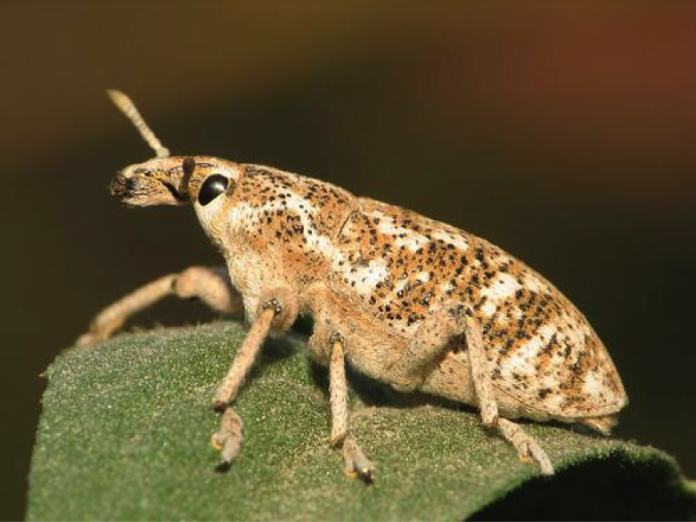BY BLAINE BUG CREW
Keeping an eye out for new infestations of noxious weeds is everyone’s job. Spotted knapweed is one weed we do not want to get established in the places we love. This plant is very aggressive and will take over an area in very little time. Now is the time to identify and deal with this plant when it is easier to see. Once you read this article, you should be a pro at identifying it and the next steps you can take to keep this invader at bay.
Spotted knapweed, Centaurea maculosa, is an herbaceous, short-lived perennial that reproduces entirely by seed. A plant may produce up to 25,000 seeds. Seeds are brown to black in color, smooth, and less than 0.25 inch long, and can remain viable in the soil for eight years. Flowers range in color from pink to light-purple and bloom from July to October. The flower head bracts are black-tipped, giving the plant its characteristic “spotted” appearance. Stems are typically 2 to 4 feet tall with lower leaves that are deeply lobed and upper leaves are more linear. Spotted knapweed ranges from moist rangeland habitats to abandoned areas. Thirteen biological control agents have been approved for release for the knapweed complex, which includes spotted knapweed.
CYAC (Cyphocleonus achates) is a robust biological control agent that can attack spotted (preferred host) and diffuse knapweeds. Cypho overwinters as larvae in roots, where they mine the vascular tissue and reduce knapweed density. Cypho adults emerge from June to mid-September and feed on knapweed leaves. The adults are 0.5 to 0.6 inches long and generally live 8 to 15 weeks. Each female deposits more than 100 eggs during her lifetime. Eggs hatch in 10 to 12 days and larvae begin feeding on roots.
Biological control, using insects or other biological agents to control noxious weeds, is only one option out of a host of other strategies. Some people mechanically pull the weeds, others choose to use sprays, while some use tillage or cultivation to control weed growth. Whichever option you choose to employ, it is imperative that you take care of the weed while it is young and don’t let it go to seed. Once spotted knapweed has gone to seed, you are looking at years of uphill battle on your property.
If you are frustrated and don’t know where to begin, may we suggest you start with a call to the Blaine County Weed Department. They can be reached at (208) 788-5516 or (208) 788-5543.



